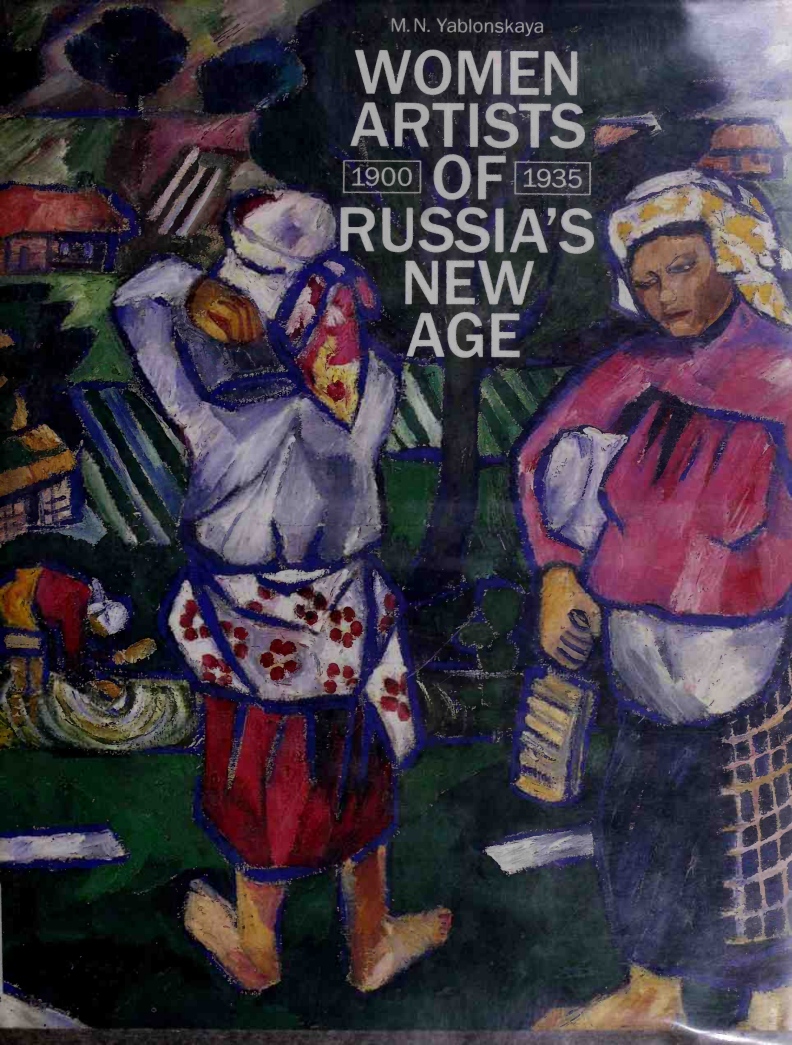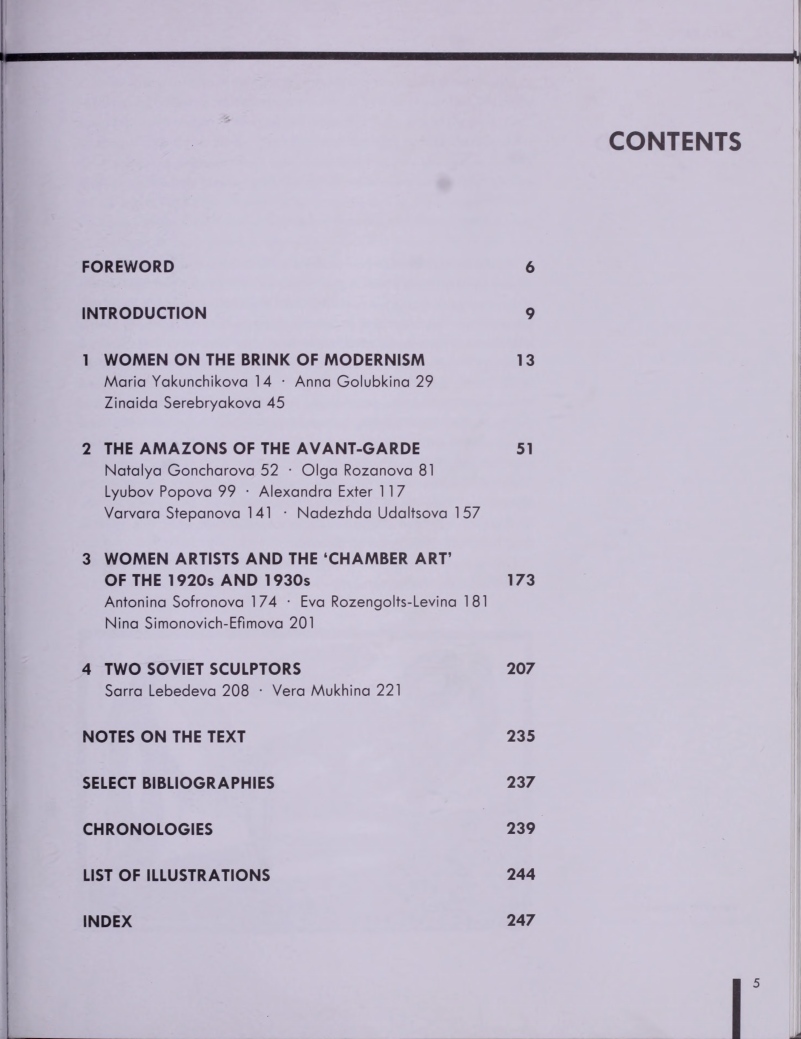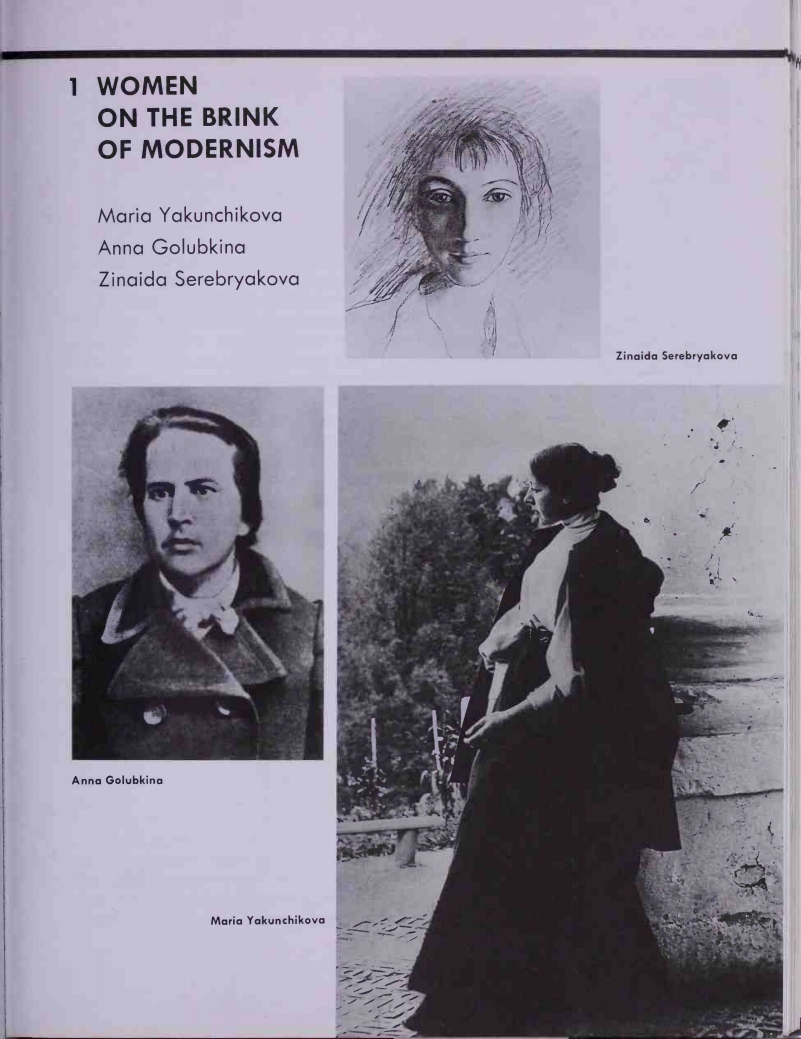|
|
Yablonskaya M. N. Women artists of Russia's New Age. 1900—1935. — New York, 1990   Women artists of Russia's New Age. 1900—1935 / M. N. Yablonskaya ; Edited and translated from the Russian by Anthony Parton. — New York : Rizzoli International Publications, Inc., 1990. — 248 p., ill. — ISBN 0-8478-1090-9
The explosive outburst of artistic creativity that shook the foundations of Russian art from the turn of the century and continued up to the mid-1930s has increasingly become a subject of absorbing interest for Western readers. And of the many exciting aspects of the period, one of the most fascinating is the crucial role played by women.
The creative individuality, boldness and stature of such avant-garde artists as Natalya Goncharova, Olga Rozanova, Alexandra Exter and Varvara Stepanova expanded the notion of the female artist far beyond traditional stereotypes, and in ways that makes their work particularly relevant today.
Miuda Yablonskaya considers the lives and work of fourteen women artists who are especially representative of their turbulent times. Attention is concentrated on the experiments of the avant-garde, but the achievements of the little-known figurative artists of the period are not neglected.
In the dramatic trajectories of these women's lives the astonishing history of Russia‘s ‘New Age’ unfolds. Their work is placed not simply in its art historical context, but also into the perspective of its creators’ careers. The comments and reminiscences of contemporaries and the artists’ own statements shed vivid light on their time, but also address our own age with striking pertinence.
This is the first study of the subject by a Soviet author, and follows a number of exhibitions in the West that have brought this exhilarating and diverse achievement into public view. The lavish illustrations, many of subjects previously unpublished outside the Soviet Union.
With 284 illustrations
83 in colour
CONTENTS
FOREWORD 6
INTRODUCTION 9
1 WOMEN ON THE BRINK OF MODERNISM 13
Maria Yakunchikova 14
Anna Golubkina 29
Zinaida Serebryakova 45
2 THE AMAZONS OF THE AVANT-GARDE 51
Natalya Goncharova 52
Olga Rozanova 81
Lyubov Popova 99
Alexandra Exter 117
Varvara Stepanova 141
Nadezhda Udaltsova 157
3 WOMEN ARTISTS AND THE ‘CHAMBER ART’ OF THE 1920s AND 1930s 173
Antonina Sofronova 174
Eva Rozengolts-Levina 181
Nina Simonovich-Efimova 201
4 TWO SOVIET SCULPTORS 207
Sarra Lebedeva 208
Vera Mukhina 221
NOTES ON THE TEXT 235
SELECT BIBLIOGRAPHIES 237
CHRONOLOGIES 239
LIST OF ILLUSTRATIONS 244
INDEX 247
FOREWORD
It was the Russian Futurist poet Benedikt Livshits who so aptly referred to the women artists of Russia’s New Age as ‘Amazons’. For the most part these women of the avant-garde sprang not from the cultural élite of Moscow and St Petersburg but issued like ‘Scythian riders’ from the far-flung provinces of Russia. In general their aim was to overrun the refined conventions of the West which had taken root there, and to create their own distinctive aesthetic standards. Even the members of the intelligentsia outside the avant-garde circle, such as Serebryakova and Simonovich-Efimova who were brought up within the cultured environments of the Benois and Serov families, later embraced the inspiration offered by rural Russia and painted the peasantry in the provinces. Moreover the sheer force of their respective characters (one thinks particularly of Golubkina and Goncharova), the formal innovations which they championed and the stylistic vitality which characterized their work and which contributed so dramatically to the development of Russian modernism, clearly associated them, in Livshits’ mind at least, with their mythological predecessors.
During the late nineteenth and early twentieth centuries these women played a crucial role in the Russian visual arts — more so than in other European countries at this time. From the turn of the century onwards they established themselves on an equal footing with their male counterparts not only by force of numbers, but by the lucid expression of their intellectual and theoretical skills, and by the quality and quantity of their artistic productivity. Although the work of these ‘Amazons’ has already featured prominently in exhibitions and literature devoted to modern Russian art, it is only in recent years that significant scholarly attention has focused on the role of the Russian women artists as a whole. The pioneering exhibition ‘Women-Artists of the Russian Avantgarde’ hosted by the Gmurzynska Gallery in Cologne in 1979 played a formative role in this respect. With this new appreciation of Russian women artists in mind, Yablonskaya has here taken up her pen to examine the contribution of major as well as lesser known figures in this, the first major publication devoted to the subject.
The author principally considers the period 1900—1935 during which, she argues, women artists conceived a new role for themselves. Adopting a contextual approach for the discussion of their work, the author sketches in their individual temperaments, highlights the most important and exciting aspects of their creativity and observes their development against the rapidly changing background of their times. In charting the thirty-five years of artistic development, from the wistful Symbolist paintings of Maria Yakunchikova to the patriotic sculptures of Vera Mukhina, the author narrates the impact on painters and sculptors alike of the two revolutions of 1905 and 1917, indicates the complexity and importance of the changing intellectual and cultural climate throughout the period, and discusses the dramatic effect of the Stalin years. The result is a carefully considered account of the unique contribution made by Russian and Soviet women artists during one of the most volatile and exhilarating periods of their history.
Anthony Parton
Скачать издание в формате pdf (яндексдиск; 34,1 МБ).
Все авторские права на данный материал сохраняются за правообладателем. Публикация электронной версии данной книги является рекламой бумажного издания и носит ознакомительный характер. Любое коммерческое использование запрещено. В случае возникновения вопросов в сфере авторских прав пишите по адресу 42@tehne.com.
12 мая 2015, 19:38
0 комментариев
|
Партнёры
|






Комментарии
Добавить комментарий